My second berried Blue Jelly Shrimp has just hatched her eggs two days before I was expecting them. She has only been berried for 22 days, that is two days less than my first Blue Jelly. She was hiding inside the coconut cave, it seems to be the favoured place for my Berried Shrimps to hang out and they have not only passed their eggs down from their saddle to their Pleopods inside there, and spent a lot of time in there whilst berried, but they also seem to retreat back inside when it is hatching time.
I have managed to spot three tiny little shrimplets from this new batch, and I am surprised at the size difference between them and my first batch of shrimplets. I had not realised how much they had grown. It is not so much the length that has changed, it is more that the older ones seem to have bulked out and look more stocky in build, though I think they are also a little longer. 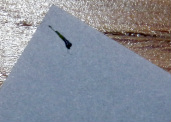 The first thing I noticed was a tiny thing floating at the top of the tank. I managed to fish it out and put in onto a piece of paper. Looking under a microscope (yes, I really am that obsessive), I could see that it was a larval looking shrimp, it had teh overall body shape, but no legs. AT first I assumed that it was a Ninja Shrimps shrimplet as they cannot survive in freshwater. I then noticed my Blue Jelly was just inside the cave and was looking paler than she had been looking earlier. That was when I saw two tiny Blue Jelly Shrimplets sitting just outside the Coconut cave and realised that what I had fished out must have been a Blue Jelly Shrimplet that had not fully developed for whatever reason.
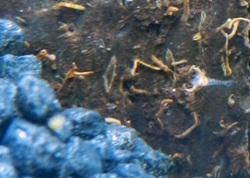 Out of focus but you can just about make out the small shape on the side of the coconut in the middle on the right hand side.
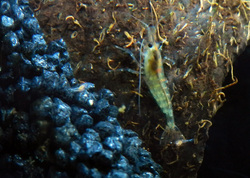 Under the tail of this male Blue Jelly is one of the newly hatched shrimplets. You can see just how tiny they are in comparison.
| 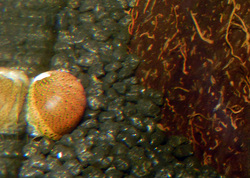 Again, this image is not very clear but there is a tiny shrimplet on the side of the coconut and a second one can just be made out next to the Candy Nerite Snail.
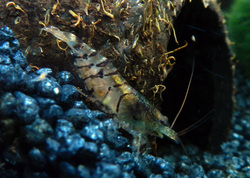 Again, there is a tiny Blue Jelly Shrimplet underneath the Tiger shrimps tail, giving a good idea of the scale of how tiny these newly hatched babies are.
| 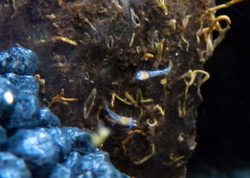 Although this image is still blurred you can make out two tiny Blue Jelly shrimplets on the side of the coconut cave. This is the best I can do as they are so tiny (2-3mm long).
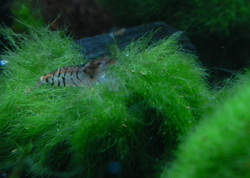 In contrast (though sadly still out of focus) you can see in the foreground an adult male Tiger shrimp, and on the black charcoal tunnel you can see an older Blue Jelly shrimplet and how much larger it looks
|
The Blue Jelly babies are now about nine days old and are starting to be a bit less timid so I often see one skipping about the tank and going on a big adventure to explore their surroundings. SO far, I have managed to count eight of them all being visible at the same time so I am hoping that I have a few more that were just hiding at that point, but even if not I am very happy with having eight little beauties running around in there.
They don't seem to have grown very much over the past nine days, but they do seem easier to spot so maybe they have grown a little. It will be interesting to compare their size against the new Blue Jelly Shrimplets that we are expecting in the next few days as well as comparing the Blue Jelly Shrimplets size with the Tiger Shrimp babies.
The good thing is that I have finally managed to get some fairly decent photos of them now, well as good as I can with my point and shoot camera (seriously regretting selling my SLR and macro lenses now). All the same, I have some good images that show the tiny little critters.
With an expected due date for hatching of next Wednesday (27th March), I am trying to keep a close eye on my 2nd berried Blue Jelly. She kindly did some posing for the camera in a great position at the front of the tank allowing me to get some great photographs of the eggs and the developing shrimplets inside. The eggs all still look quite a nice bright yellow colour, though it is clear to see small signs of red which from looking at the current shrimplets in the tank seems to be a coloured spot on their body just behind the head. They are too small to see their colouring properly but look like they are still mainly blue. The eyes are really clear to see, and once again looking at mum she has a definite and rapidly growing saddle which is the same as my first berried Blue Jelly.
Things appear to be going well, but I am keen to see if I notice the same level of colour changing within the eggs over the next few days as I noticed with the first batch of eggs. The eggs still look quite solid, and I had noticed that the last batch of eggs became almost transparent, so I am also keen to see if this happens again as we get closer to next Wednesday.
So, at a guess it is day 22 of my first Blue Jelly Shrimps 'pregnancy' (if you can call it that). The eggs really seem to be going through a big colour change from the original bright yellow eggs that she was first carrying. Initially they started to turn a more orange shade, but this has developed in the last couple of days to an almost red colour. I am slightly worried at what this means and if it is normal or it it is a sign that things are not doing too well.
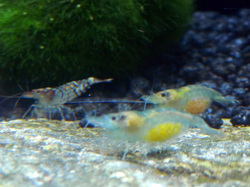
This photo shows the vast colour difference between the eggs of the first 'berried' Blue Jelly and the much brighter yellow eggs of the female whose eggs are just eleven days younger.
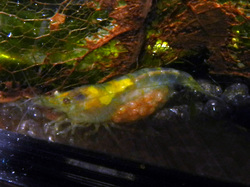
This photo shows a closer shot of the eggs and contrasts against the yellow of the newly developing saddle. The fact that the saddle is getting so big makes me think that the hatching date must be very close now, but I am worried that the red tinge is a sign that the eggs are no longer developing and that I am going to lose all of this first batch. I guess only time will tell.
After having gone into hiding for a day or so, one of my Tigers that I thought was saddled is now berried and happily wondering around hungrily chasing down every last bit of food in the tank. The Tigers don't seem to show their saddles as clearly as the Blue Jellies and it is not totally clear from these images but you can see the slight shape of the eggs in the saddle. One of the main differences I have noticed between the Blue Jellies and the Tigers is the timescale between the saddles showing and the shrimps being berried. The Tigers seem to have gone from the first to second stage much quicker, just a matter of a few days, whereas the Blue Jellies took between 2 and 3 weeks, however, this could be that the Tiger female may be more mature than the Blue Jelly Females, so again I will have to keep and eye on this timescale next time (or with future off spring).
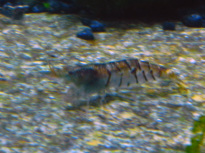 Saddled Tiger Shrimp - It is not very easy to see the eggs in the saddle and the picture quality doesn't help either.
| 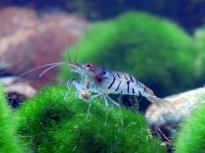 Male Tiger Shrimp - Body is beautifully clear in contract to female in image above
| 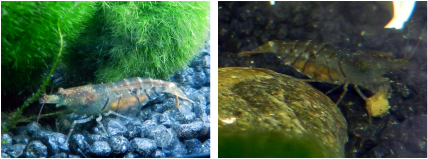
A berried female Tiger Shrimp. The Orange eggs show up clearly on the Pleopods
My second female Blue Jelly Shrimp has finally lost her saddle (apart from one or two rogue eggs that have yet to move) and is now happily carrying her collection of bright yellow eggs.
When looking at mummy number one, her eggs seem to be showing some small shadow shaped inside so it looks like the babies are starting to develop quite nicely.
No signs yet of any saddles with the Tiger Shrimp, but I have only had them for a little over a week so it is quite soon to be expecting anything from them, though the tank is being littered on a daily basis with old shrimp shells (at least one or two each day) so there is good signs of growing going on in there and today's water testing showed that the water is keeping very stable and clear so all is going well so far.
With the (hopefully) imminent arrivals coming I am trying to get everything set up ready for the babies. With this in mind I have added a new plant, a round pellia as I read that its broad leaves are perfect for holding the tiny food particles for the shrimplets. After adding it to the tanks it has always had at least one of my shrimps on it so they are loving this plant already, just hope they leave some food for the babies.

The Second Blue Jelly is now Berried, whilst shadows can be seen inside the eggs of my first berried Blue Jelly.
I have been looking at some shrimps and snails on ebay for quite a while, but as I knew we would be going to visit family that live fairly close to the seller I held off so I could visit them and chose for myself. I wanted to get some other shrimps that would be able to live with my beautiful Blue Jellies, but obviously don't want to risk any interbreeding between them. I fell in love with the Tiger Shrimps and the Ninja Shrimps but couldn't chose between them. Lucky for me I didn't have to as the Tiger shrimps will not breed with the Blue Jellies and the Ninjas need brackish water for their babies to survive so I was able to get some of each. So, I am know the very proud owner of five of each. It is quite dangerous for me to go into aquatics stores, and going to Kesgrave Tropicals was a really bad move as they have a massive range of fish, snails and shrimps (and much more), and my wish list has grown longer and longer. I also walked away with some Candy Nerite snails (to go with my Zebra Nerites) and some Assassin snails (to try and rid my Platy tank from the infestation). They were all really helpful and friendly and made us feel really welcome. When we said we were on our way home from a visit to the area they made sure that the shrimps and snails were packed really well and would be as comfortable as possible for the three hour (plus stops) journey back to Brighton. On the way home I was already planning my next visit to them, though I may have to place an order via ebay in the meantime. So, my Shrimp tank now contains five Blue Jelly Shrimp, five Tiger Shrimp and five Ninja Shrimp. Oh, and on top of that, one of my Blue Jelly Shrimp is now berried (pregnant) and happily wondering around carrying her eggs and a second female has got a massive saddle (hopefully she will soon also be berried), hopefully in the next few weeks my tank will have some lovely little babies running around. 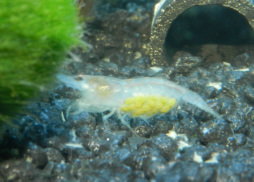 Berried Blue Jelly Female
One of the most important aspects of keeping shrimp is the quality of the water. If the conditions aren't right then the shrimp won't survive let alone live long and healthy lives. I have read so much about water quality over the past year since going from muddling along with my two Orandas (and getting most of their care completely wrong up until now), and getting my second fish tank for the Platys. I am really angry with myself for not doing my research four years ago when we decided to get a few goldfish for our boys (had I have done my research then we would never have brought any goldfish at all). I based it all on the fact that I had kept goldfish as a child. We used to win them at the fair, and would take them home and keep them in a tiny unfiltered fish bowl where they would last for a year or so if we were lucky and that the giant goldfish called Jaws that my mum had for about fifteen years (also a win at the the fair) was just a freak of nature. I assumed that was all they needed and that they were short lived, so didn't think twice when my kids asked for a fish. Now I know how much care and space they need and that they are not short lived at all I will never ever buy another goldfish (unless I have room for a big enough tank or a big garden pond). Anyway, water quality is the key, and as I am hoping to breed my Blue Jelly Shrimp (as well as caring properly for the fish in my other two tanks) I needed to invest in the proper kit. I had tried using the test strips but they are not all that accurate (unless you want just a quick reading to see if anything is at odds), and I had brought a separate Ammonia test from API as this is one of the key problems that need to be prevented in a Shrimp tank. As the API tests are the best (that I have found anyway), I decided to invest in the API Freshwater Master Test Kit and found a great seller on ebay who was selling them for just £19.99 including postage which was a real bargain, (I used Specialist Marine Aquatics but there were several sellers at a similar price). The test kit arrived yesterday and is really simple to use. I was really happy that the water tested perfectly so all is going well so far
I brought my first Shrimps just a few months ago. To be honest they were (and I hate to admit it) a bit of an impulse buy. I was actually going out to get a few platys to add to my community tank and get a bit of colour and I saw these funny little shrimps scampering about in the tank. I was told that these Yamato Shrimp would be fine in my aquarium so I took one to start with and before I knew it I was totally in love with her and after a bit of research I was soon rushing back to the store to get her some friends. The more I read about Shrimps the more it sparked my interest, and the more I watched my four funny little chaps the more I loved them. I became quite obsessed, even to the point of naming them (Sherman, Sheldon, Sharon and Sheryl). I totally bored my family with tales of what the shrimps were doing, but they were just so comical and entertaining to watch. It was during my research that I started to realise the huge variety of Shrimps that were available. One in particular stood out for me, the Blue Jelly Shrimp (Neocaridina Heteropoda var. Blue Jelly). I was really lucky and managed to find a breeder who was selling them and who was also really happy to give plenty of advice (I am slowly becoming a bit of a nerd, but if it helps my Shrimp who cares). So I placed my order with www.easishrimp.co.uk and have started off my first dedicated Shrimp tank with five of these beautiful Shrimp and will see where that takes me. Since I received them on 23rd January they have settled really well. The tank is regularly littered with their old shells as they are growing rapidly, and they are also slowly getting their saddles (four of them appear to be females and the last one is hopefully a male) so I am anticipating the pitter patter (or splish splash) of tiny little Blue Jelly Babies in the coming months.
|







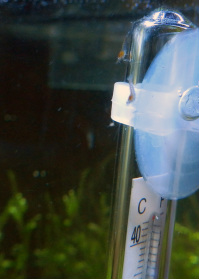
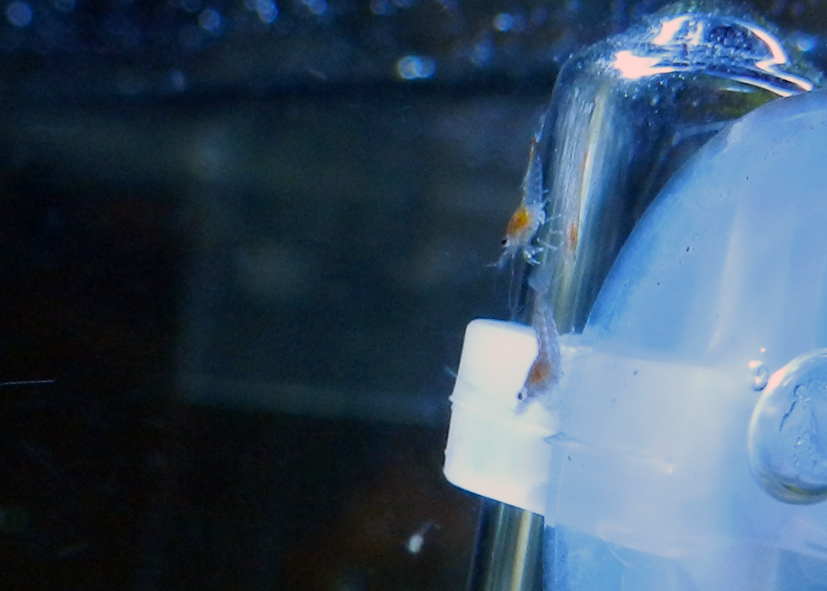
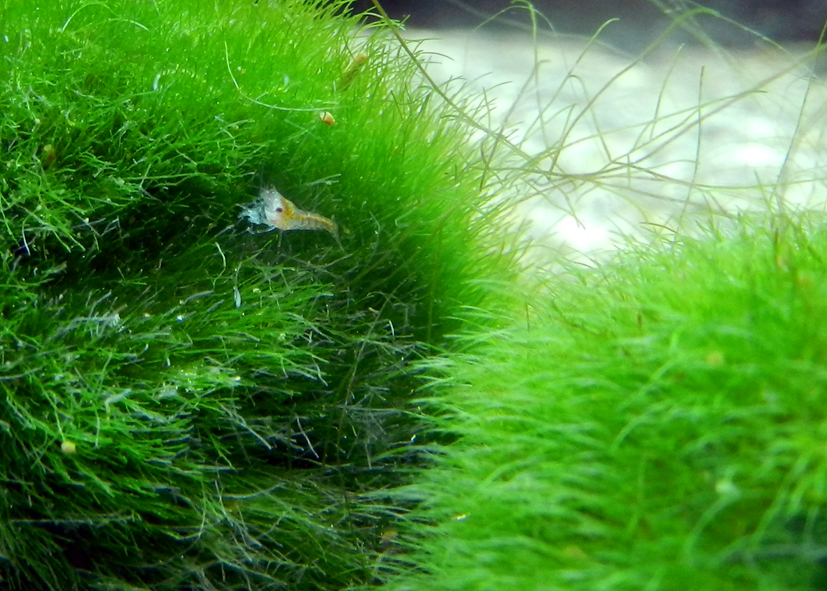
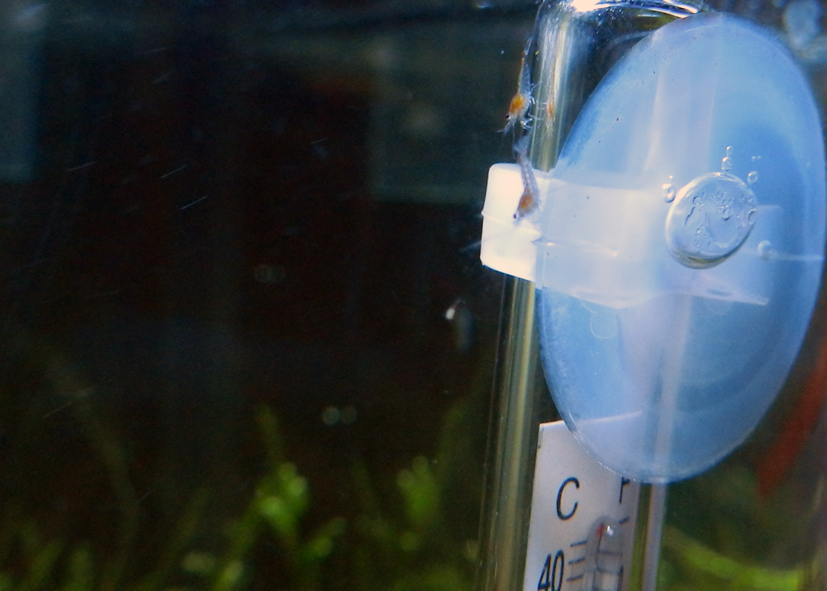
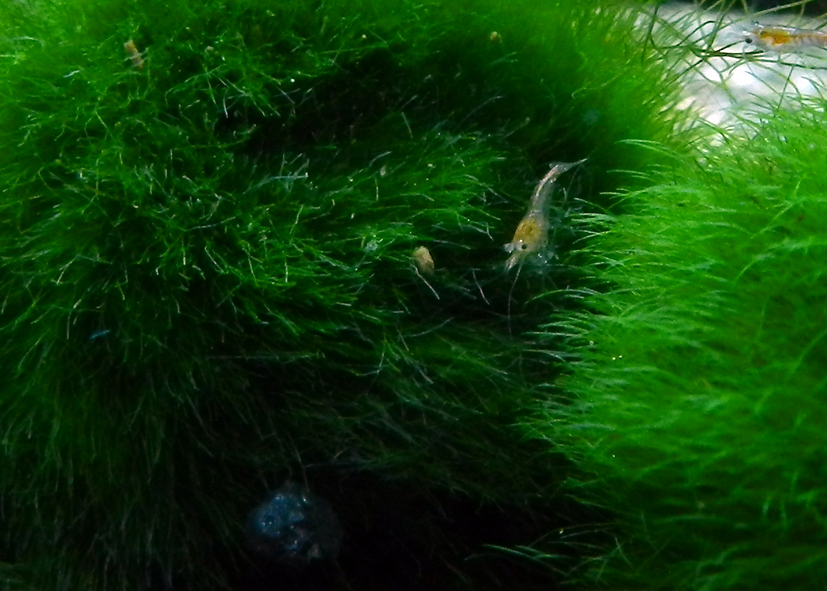
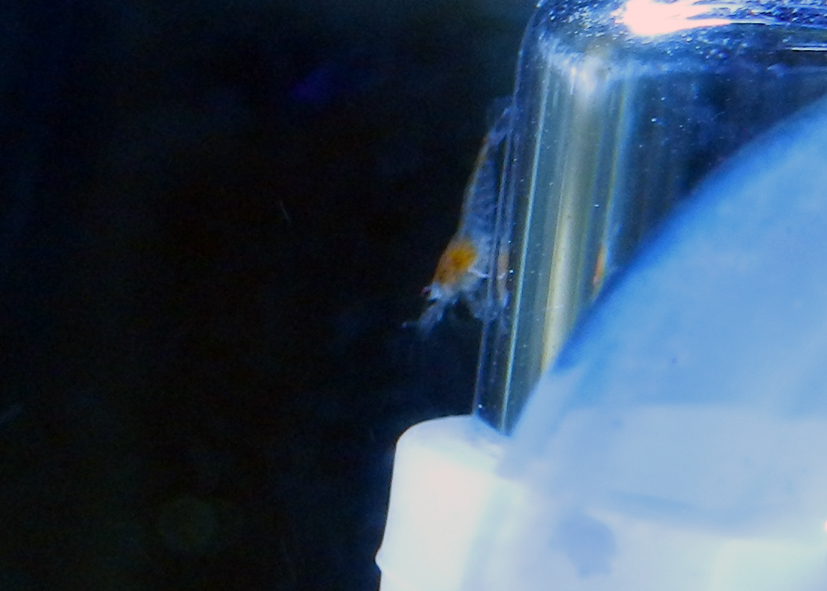
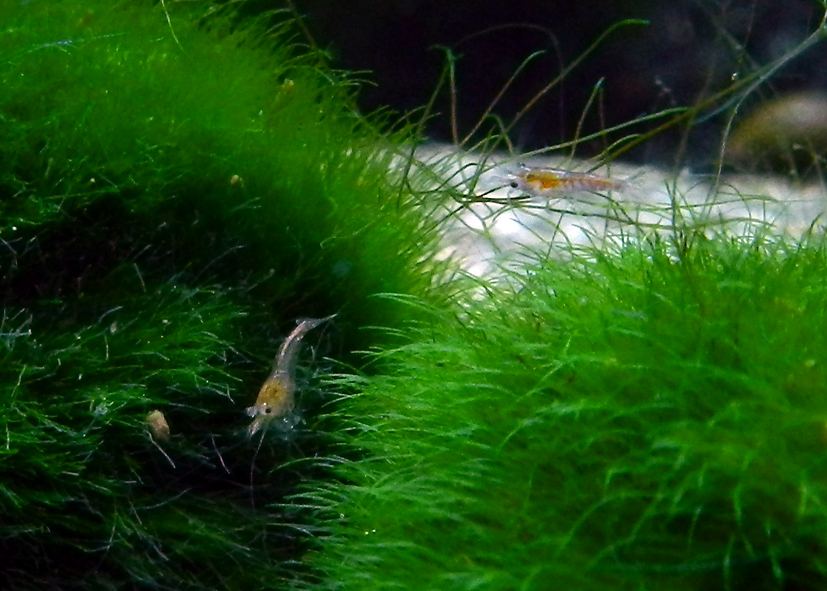
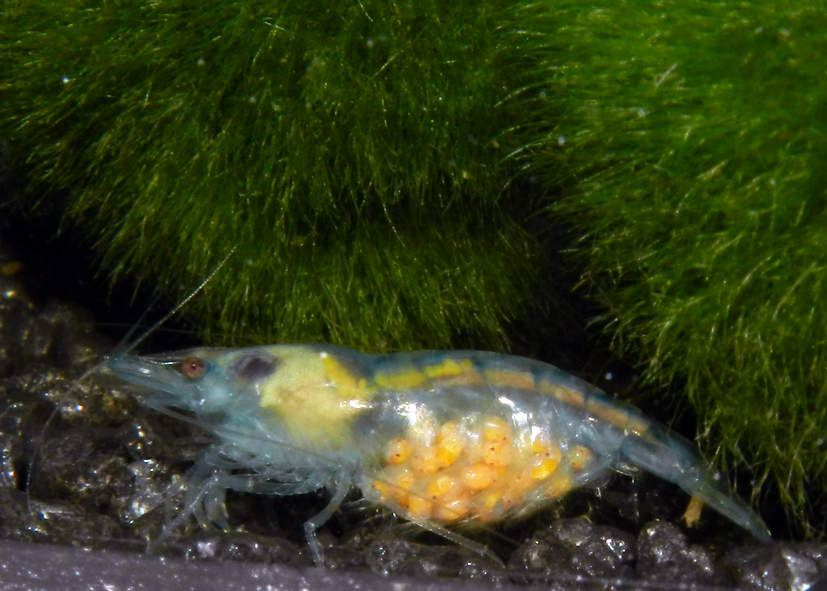
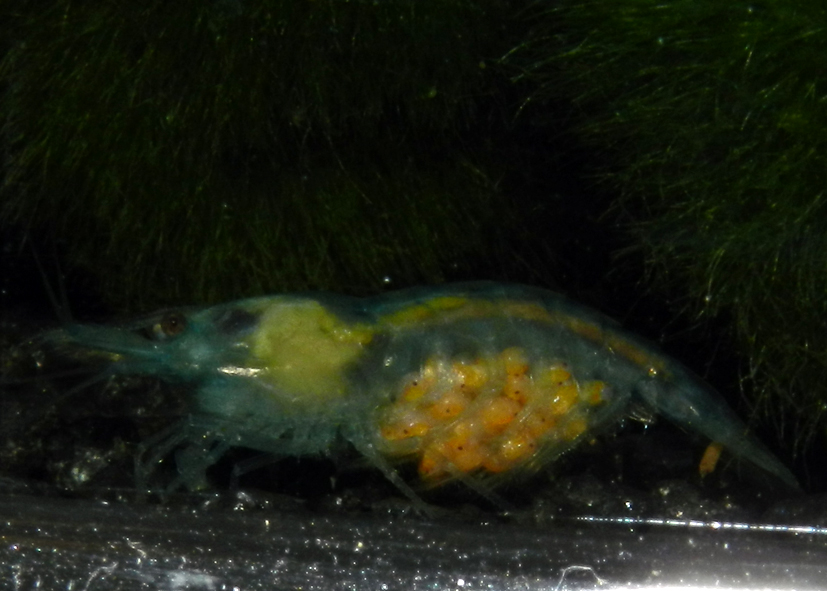
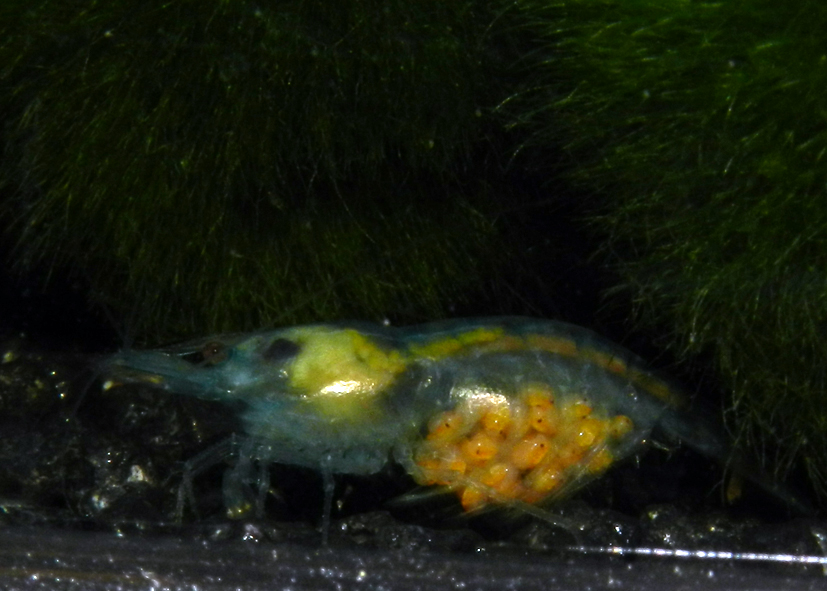
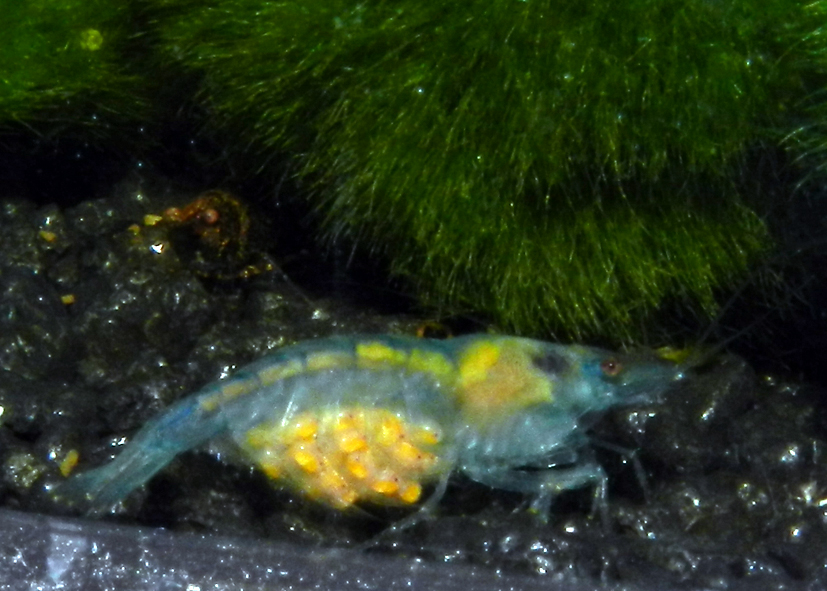
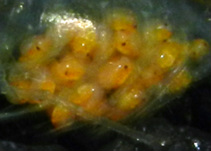







 RSS Feed
RSS Feed